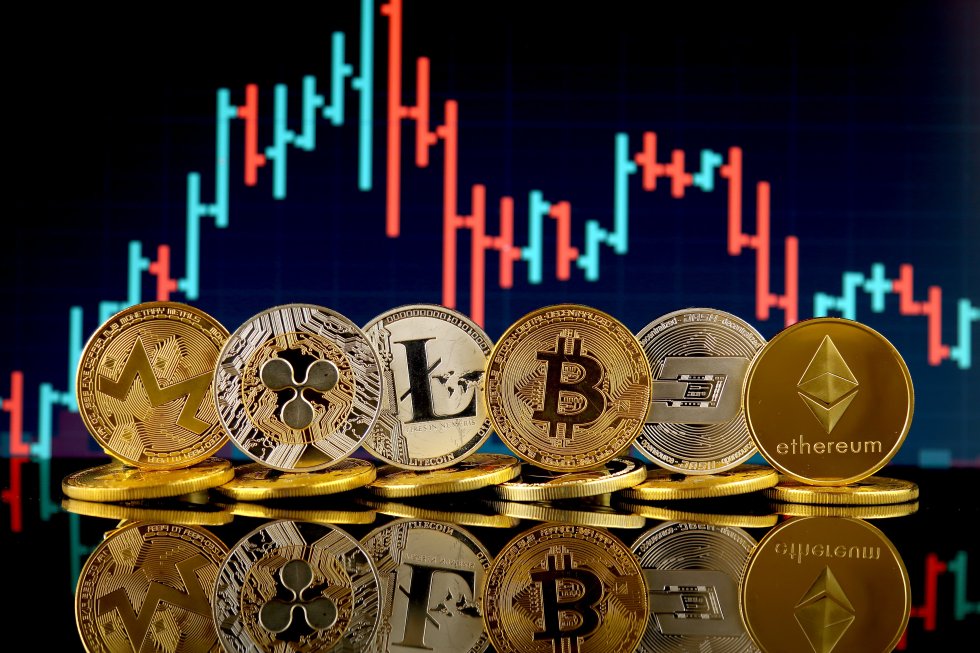
The crypto markets saw a disappointingly bearish six months in the first half of 2018 with the majority of cryptocurrencies losing between 60% and 90% of their value throughout this period.
Surprisingly, the altcoins that did do well in the first half were the lesser known, newer ones. The good news, however, is that the trend seems to changing now, with the market picking up steam. This has given experts hopes of a more bullish latter half for 2018.
If anything, what this reaffirms, once again, is that the cryptocurrency markets are volatile. The safest way to trade them, without the need to bear the risk of storing digital assets, is to opt for crypto CFDs. However, with leading brokers, like Blackwell Global, offering 15 different crypto pairs to trade in, how do you choose which one is the best for you?
Here’s a look at what is expected of the top three digital currencies for the remainder of 2018, to help you make an informed trading decision.

1. Ethereum (ETH)
Although it is still second in market cap to Bitcoin, Ethereum does hold promise, given that some of the major obstacles, such as scalability, seem to have been taken care of. In fact, Ethereum didn’t fare as badly as Bitcoin or Ripple in the first half of 2018. It has become the most popular distributed ledger platform for new blockchain projects and given that Ethereum is the go-to option for smart contracts, the future looks bright.
On the other hand, being based on the Proof-of-Work protocol to verify transactions, the Ethereum network can experience congestion. Also, it supports only one coding language, Solidity, which might act as an entry barrier for many developers. Ethereum is also seeing intensifying competition from newer coins like Cardano and NEO, which offer a similar platform but with much better technology.
However, it will take time for any platform to take over from Ethereum. ETH has been growing in value in recent months too, which is another incentive. Of course, with CFDs, you get to trade both bearish and bullish markets, so the most important factor is to stay updated on developments that can help predict the future direction of price movements for this crypto.
2. Bitcoin (BTC)
Although Bitcoin lost a significant part of its value through the first half of 2018, it still remains a popular cryptocurrency for trading.
Bitcoin appears to be on the recovery path now. With the largest community of investors and developers backing it, the price of Bitcoin is likely to grow in the future. In addition, this cryptocurrency is possibly the easiest to buy, being supported by every exchange and wallet. What’s more, Bitcoin is increasingly seeing mainstream adoption, with Microsoft, Bloomberg and others accepting payments in this digital currency.
The problems that plague BTC are the same as those that had challenged ETH – transaction speed and scalability. Transaction fees are also at a record high. With newer alt coins entering the market with better technology at regular intervals, such problems could make it difficult for BTC to hold on to its leadership position.

3. Ripple (XRP)
With the backing of some of the biggest banking names in the world, Ripple definitely seems to be one of the best options for crypto and crypto CFD trading. Although its price is low at present, XRP does hold a lot of promise. The problem is that unless you are willing to go long and hold for quite some time, you might not see very large gains.
One of the pros of trading XRP is that it has a very specific application – international payment transfers. Also, having overcome the challenges of transaction speed and scalability, along with low fees, it is among the very few altcoins that are already being tested for mainstream use.
On the other hand, given that Ripple Labs holds 50% of the total XRPs, it certainly seems more centralized than decentralized. And, with financial institutions beginning to work on developing their own digital currencies to facilitate international payments, one has to wonder how long XRP will remain relevant.
Choosing the right crypto CFD for you is a personal decision and one that should come from extensive research and knowledge of the sector – no matter how volatile it often is.
Trading leveraged products involves a high level of risk. 71% of retail investor accounts lose money when trading CFDs with Blackwell Global Investments (UK). You should consider whether you understand how CFDs work and whether you can afford to take the high risk of losing your money – Risk Disclosure Notice
What are your thoughts on crypto CFDs? Let us know in the comments below.
Images courtesy of Blackwell Global, Shutterstock


















